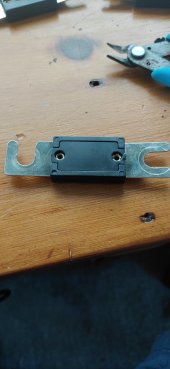ericfx1984
Solar Enthusiast
- Joined
- Oct 10, 2021
- Messages
- 741
So I'm curious about low quality a&l fuses especially the ones that were designed for audio equipment
I've been having issues using them when I attempt to start my RV air conditioner all that being said the RV air conditioner is fairly old and that may be part of the problem
I've touched based on this issue in another thread but I noticed that on cheaper quality ANL fuses they seem to have a rivet that goes through either end but on higher quality a&l fuses such as Blue Sea which is like $30 a fuse they seem to go through the outside
Based on that I'm wondering if there is more internal surface area to handle higher loads on higher quality fuses



I've been having issues using them when I attempt to start my RV air conditioner all that being said the RV air conditioner is fairly old and that may be part of the problem
I've touched based on this issue in another thread but I noticed that on cheaper quality ANL fuses they seem to have a rivet that goes through either end but on higher quality a&l fuses such as Blue Sea which is like $30 a fuse they seem to go through the outside
Based on that I'm wondering if there is more internal surface area to handle higher loads on higher quality fuses






